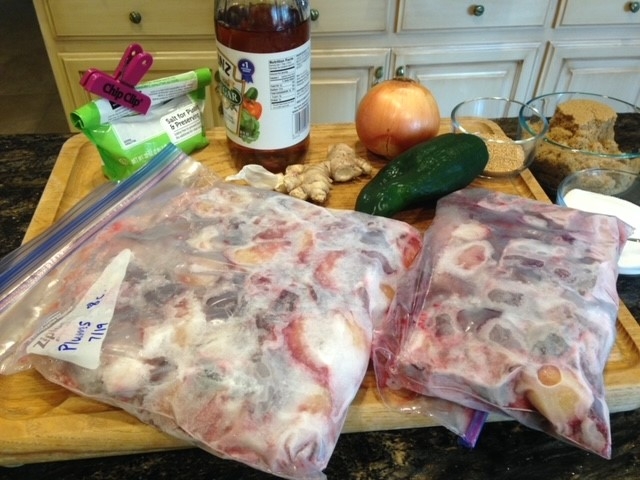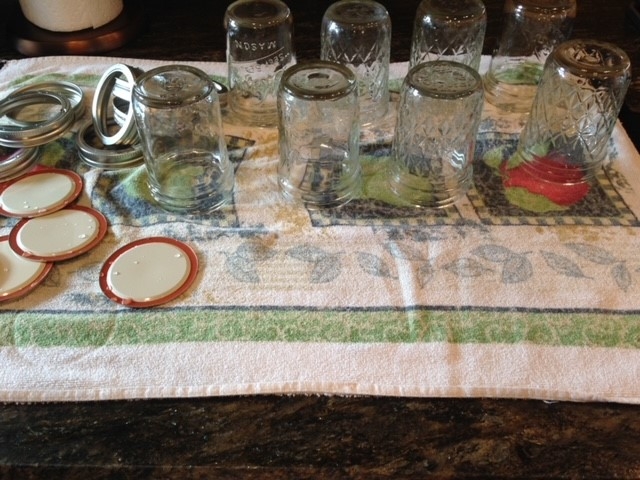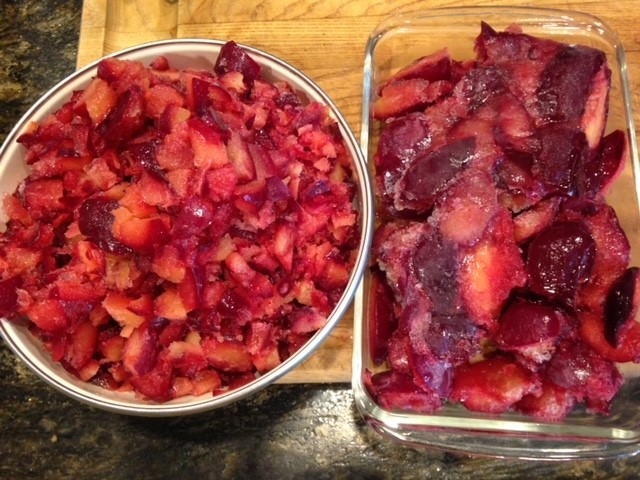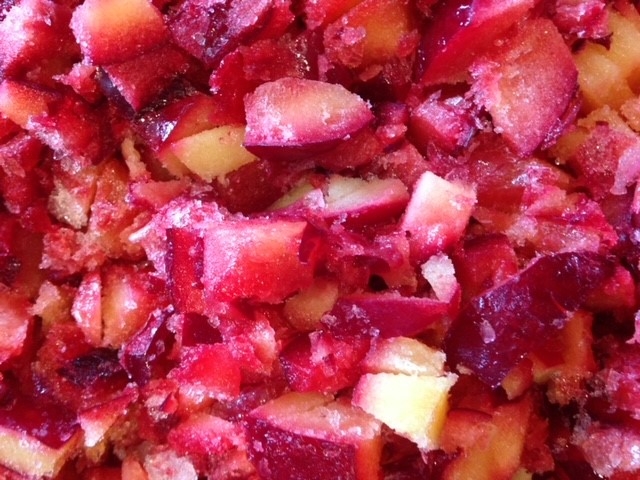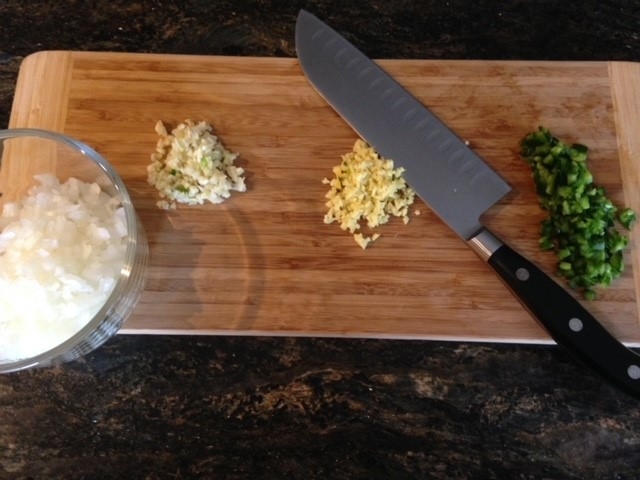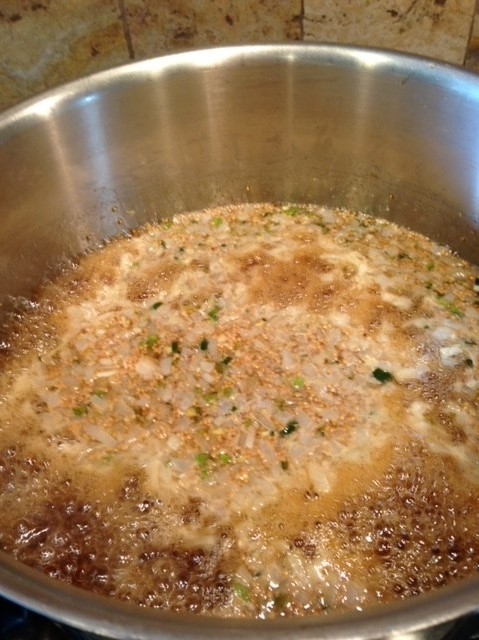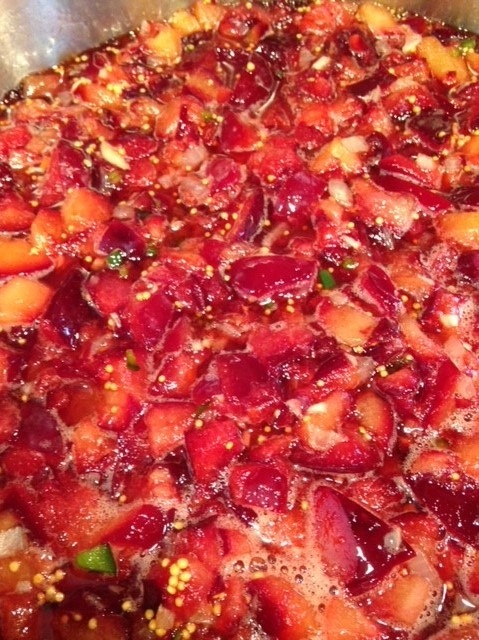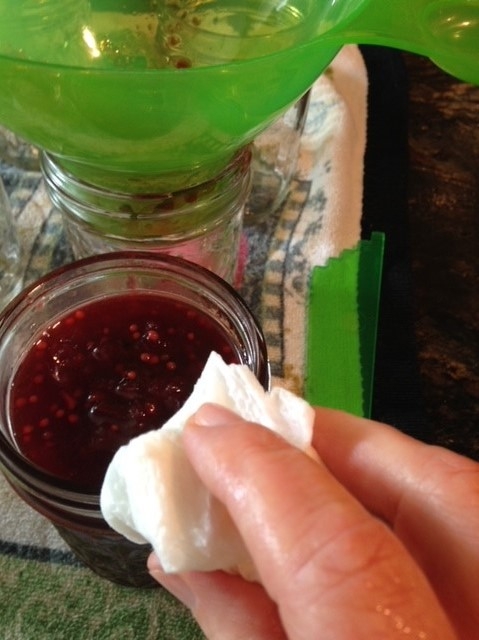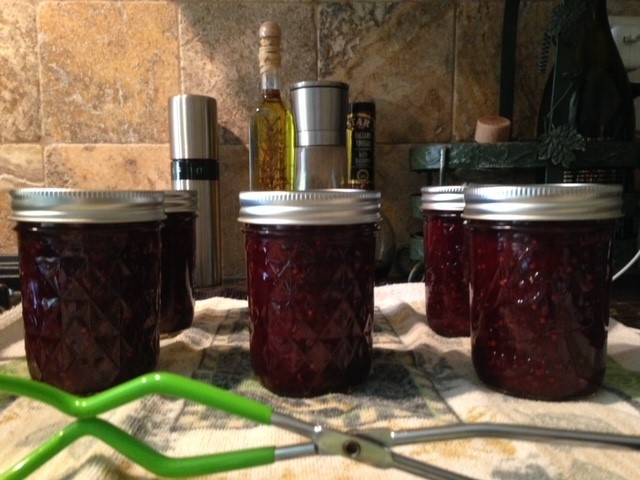Is your freezer full of your summer fruit bounty? Are you wondering how to use some of that stashed produce? My freezer was experiencing an overload of plums. The last couple of summers, my Santa Rosa plum tree has provided a large crop each season. I had made jam, and so many cobblers and tarts, my family started to back away when they saw the bags of frozen plums being unloaded!
I needed a different plan. I discovered a recipe for Plum Sauce that I thought would be ideal for using up some of my excess produce. I decided to give the recipe a try.
Photo credit: Dayna Ravalin
After washing my hands and cleaning my work surfaces, I gathered my ingredients. My plums are still frozen. I premeasure my fruit prior to freezing and make a note on the container as to the volume inside. By doing this step, I'm able to better gauge how much I need to take out of the freezer for the recipe I'll be preparing whether it's jam, cobbler, or plum sauce!
Photo credit: Dayna Ravalin
Once I have my ingredients ready, I move onto getting my jars, lids, and rings prepared by washing them in hot soapy water, rinsing well, and putting the jars into a pot of simmering water to heat up. Follow manufacturers' directions for preparing your lids. These 2-part lids only require washing and rinsing. You do not need to heat these lids before use.
Photo credit: Dayna Ravalin
I allow the fruit to only partially thaw before chopping and remeasuring according to the recipe to keep the volume as close to that of fresh fruit as possible.
Photo credit: Dayna Ravalin
You can see I was able to finely chop my plums since I didn't fully thaw them.
Photo credit: Dayna Ravalin
This recipe calls for finely chopping all your produce ingredients. This fine chop will enable them to break down and release their flavor and juice while minimizing chunkiness to produce a smoother sauce. I used jalapenos for the peppers in my batch, but you can use whatever variety of pepper you enjoy. This gives you control of the “heat”. NEVER alter the volume of peppers called for in a recipe you will be canning. This could make the recipe unsafe.
Photo credit: Dayna Ravalin
All the ingredients except for the plums are added into a large stainless-steel saucepan and combined.
Photo credit: Dayna Ravalin
These ingredients are brought to a boil over high heat stirring constantly. Don't turn your back on this step since there is a lot of sugar and it will burn easily.
Photo credit: Dayna Ravalin
Now is the time to add your plums. Bring this mixture back to a boil. Reduce your heat and continue to boil gently until the mixture thickens and becomes syrupy. This will take about an hour and a half to two hours.
Photo credit: Dayna Ravalin
Once your product is thick enough, ladle into your prepared jars leaving ½ inch headspace. Remove air bubbles and adjust the headspace if needed. It is important to wipe the jar rims with a damp towel to remove any spills of your sauce on the top of the jar. It is quite sticky like jam, so a clean jar rim is important to help assure you will have a good seal after processing.
Photo credit: Dayna Ravalin
Here are my completed jars that I processed for 20 minutes in my steam canner. You may use a boiling water canning instead. I prefer my steam canner since it uses less water, is easier to move, and takes less time and energy to get to temperature to start my process. Either one is acceptable for this recipe.
I use this plum sauce as a baste on salmon fillets, its great on chicken and pork too. We have also used it to enhance the flavor of a vegetable stir fry served with steamed brown rice. Find the recipe using this link: https://www.bernardin.ca/recipes/en/oriental-plum-sauce.htm?Lang=EN-US
Using some of the fruit out of my freezer felt like a great way to start the new year. It won't be long until my plum tree is loaded again!
Author - Master Food Preserver Program Coordinator
